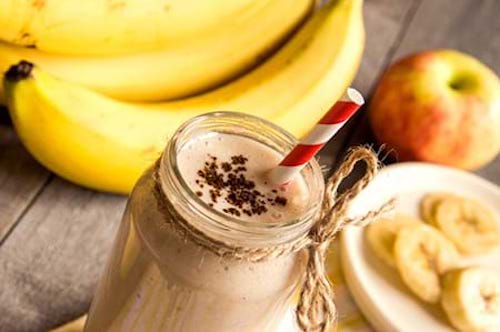Have you heard about food combining? I’m getting more and more inquiries from my patients regarding this technique. It combines certain foods for better digestion, weight loss and overall wellness.

Typically, the questions come from women who are dissatisfied with modern medicine. They want to try food combining to relieve vague or confusing digestive problems.
Will these diets work for you? It’s certainly not wrong to be interested in these diets. And, when they’re broken down, all share many of the same basic principles. I tell my patients about the concept of food combining, what the scientific evidence says and what are the real steps to optimal health and weight loss and then let them make the decision.
The main principles of the food combining diet
Food combining advocates that certain groupings of foods — and the order in which we eat them — are essential for optimal health and weight loss. This approach to nutrition emphasizes several principles:
- Digestion expends large amounts of physical energy. When you ingest foods in the wrong order or in undesirable combinations, it uses significantly more energy. This expenditure of energy results in a chronic state of fatigue.
- You digest food groups such as carbohydrates and proteins at different rates, requiring multiple, and often conflicting, enzymes. When you eat specific foods out of order or in the wrong combination, the digestive tract becomes overloaded. It is then unable to digest everything efficiently.
- Some food often stays in the stomach and “rots” or ferments, releasing allergens and toxins into the body. Many food-combiners believe that the symptoms we typically associate with indigestion such as bloating, gas, nausea and heartburn, are actually due this inappropriate combination of food and subsequent overloading of the digestive tract.
Food combining promotes multiple simple meals. They are spread throughout the day in order to assist the various digestive environments required by certain foods. For example, using this principle, you eat fruit by itself because you digest it more quickly. And it can perpetuate further rot in the stomach if eaten with other foods.
How does this technique create optimal health? The theory of food combining emphasizes that modern-day food is more complex due to today’s methods of cooking and processing. That means our bodies expend a lot more energy to digest these foods. That means that certain combinations of food overwhelm the digestive process, causing physiologic stress and subsequent illness.
Why the food combining diet doesn’t work
While this diet may sound amazing, unfortunately my experience shows that it simply doesn’t work. There’s no real evidence showing that food combining diets improve digestion and health or enhance weight loss.
That’s because the concept oversimplifies the complex — and very efficient — process of human digestion. Promoters of food combining also greatly underestimate the body’s ability to function and adapt as it has done successfully for thousands of years! If our digestive systems were as fragile and finicky as “food combining” leads us to believe, we wouldn’t be here today.
Two specific examples:
- Food combining fails to acknowledge that whole natural foods do not exist in separate components. Whole grains, such as quinoa for example, contain both essential amino acids (protein) and carbohydrates. If our bodies were not meant to digest these two food groups together, why does Mother Nature combine them so frequently? The foods available in this theoretically “pure” form are primarily heavily processed and not at all natural.
- Breaking down nutrients into their simplest forms and absorbing them into the body for fuel happens throughout the digestive tract, not just in the stomach. The enzymes that break down nutrients are examples of the body’s phenomenal ability to adapt and persevere. If the enzymes needed to process different foods were indeed conflicting and harmful, the human race would not have survived. Even though people eat tons of modified, chemical-filled, processed foods, we still flourish as a species.
Many of my patients who are interested in food combining have seen specialists and had multitudes of tests that come back normal. Yet they’re still dealing with symptoms that persist, despite numerous medications and standard interventions. Some of these patients have found relief with food combining, while others have not. For these women, I don’t believe it’s the food-combining that’s helping them, but rather establishing a controlled eating environment. Through this diet many women are able to remove the primary triggers of their digestive symptoms, and learn to control them by eating the right foods, the right way.

A better way to eat for health and weight loss
While the science behind food combining is lacking, you can apply some of the ideas to your life, resulting in more weight loss and improved health. Follow these easy, and accurate eating guidelines for optimal health and weight loss, adapted from some of the rules of food combining:
Keep it simple.
Limit the variety of foods available during a meal, as the fewer options you have, the less you will put on your plate. Additionally, it will be much easier for you to keep track of how much you have eaten.
Fill your plate with fruits and vegetables.
Many well-studied diets recommend that your plate contain at least 50% cooked or raw non-starchy vegetables. By keeping half your plate full of plant foods you get a powerful dose of natural, essential nutrients, eat less and stay full longer.
Find your “new full.”
Often when we eat quickly, the sensation of fullness doesn’t hit us until after we are actually full. This is because there is a delay in our body’s response to the consumption of food. Unfortunately, many of us eat large meals quickly and think that the painful, tight, over-full sensation means we’re full.If you stop eating when you are about 80% full, this will soon become your “new full” and you’ll overeat much less often. When you eat slowly, you allow your body time to feel more genuinely full. Try putting less food on your plate and drink sips of water between bites or just put the fork down and allow yourself to chew, taste and swallow before you pick it up again.
Spread out your meals.
Eat 4-5 small meals throughout the day rather than 2-3 large ones. You’ll be less hungry and not as prone to snacking or binging. By introducing regular small meals, your body will learn to be satisfied with less food, and your energy levels will remain stable.
Start your day with fruits and vegetables.
It takes a lot of time and energy to digest raw fruits and vegetables. By introducing these foods before major meals, you will remain full longer and will be less tempted to snack.
Be mindful of hunger, food and fullness.
You can teach yourself what is best for your body and reduce your digestive symptoms by using a food journal to keep track of your daily meals. Include any symptoms that you notice after eating.
For years, women have been bombarded with new and “amazing” diets that promise to transform their lives and make their dreams come true. Unfortunately, a majority of new-fangled diets, such as food combining, are strict, confusing, hard to follow and lacking in the basic understanding of how the human body works.
When it comes to healthy eating, there is no “miracle” diet. Instead, you need to follow a diet that works for you. Think about what you eat, how it makes you feel and what how your body responds. You may discover that you can clear your path to optimal health and weight loss with just a few small changes instead of a massive overhaul.










